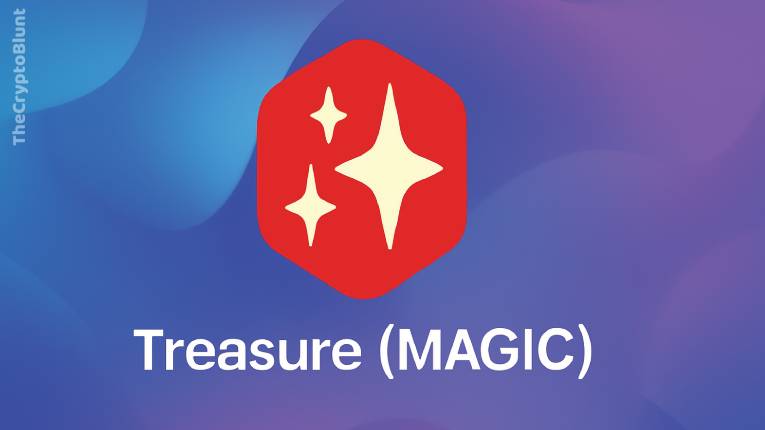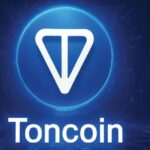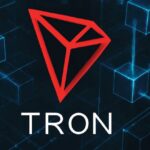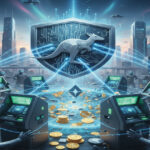When I first encountered crypto, the idea of owning digital assets was intriguing, but the early attempts at blockchain gaming often felt clunky or limited. Games were isolated, and the “play-to-earn” models seemed more like “grind-to-earn” with little actual fun. It was difficult to see how blockchain could truly revolutionize the gaming industry. Then, I discovered projects like Treasure (MAGIC), which envisioned a decentralized “Nintendo” – a network of interconnected games, all powered by a single, unifying token, where assets could move freely between different digital worlds. This idea of interoperability and a shared economy across multiple metaverses was a real “aha!” moment, showcasing how blockchain could unlock a new era of gaming ownership and creativity.
- Part 1: The Foundations of the Digital Economy – Understanding Cryptocurrency and Blockchain
- Part 2: Demystifying Common Crypto Misconceptions
- Part 3: Why Crypto Matters – Real-World Applications and Benefits
- Part 4: The Treasure (MAGIC) Ecosystem – The Decentralized Game Console
- Part 5: Getting Started in the Crypto World – A Beginner’s Perspective
This comprehensive guide is designed specifically for absolute beginners. We’ll cut through the jargon, tackle common misconceptions head-on, and show you why this technological revolution matters for everyone, not just tech enthusiasts or financial gurus. We’ll explain the fundamental concepts of crypto, dive deep into the Treasure (MAGIC) Ecosystem, and reveal how its unique approach aims to build a thriving, player-owned, and developer-friendly decentralized gaming universe on a powerful Layer 2 blockchain. We believe in transparent education, providing you with accurate, well-researched information to help you navigate this exciting new frontier.
Let’s embark on this journey to understand the digital revolution, starting with the very basics.
Part 1: The Foundations of the Digital Economy – Understanding Cryptocurrency and Blockchain
Before we dive into the intricacies of the Treasure (MAGIC) Ecosystem, it’s crucial to grasp the bedrock principles: cryptocurrency and blockchain. Think of them as the engine and the ledger of this new digital world.
What is Cryptocurrency? More Than Just Digital Money
At its simplest, cryptocurrency is a form of digital or virtual currency that uses cryptography for security. Unlike traditional currencies (like the Indian Rupee or US Dollar) issued and controlled by central banks, most cryptocurrencies are decentralized. This means they are not subject to government or financial institution interference.
Imagine a currency that lives purely online, secured by incredibly complex mathematical puzzles. That’s a cryptocurrency. Bitcoin, launched in 2009, was the first and remains the most well-known cryptocurrency. Since then, thousands of others have emerged, each with its own unique purpose and technology.
Key characteristics of cryptocurrencies:
- Digital: They exist only in digital form, not as physical coins or notes.
- Decentralized: No single entity controls them. Their operations are distributed across a network of computers.
- Secured by Cryptography: Advanced encryption techniques protect transactions and control the creation of new units.
- Peer-to-Peer: Transactions occur directly between users without intermediaries like banks.
- Immutable: Once a transaction is recorded, it cannot be altered or reversed.
Unpacking the Blockchain: The Transparent, Immutable Ledger
If cryptocurrency is the digital money, then blockchain is the revolutionary technology that underpins it. Think of a blockchain as a digital, public, and distributed ledger. Instead of a single bank keeping a record of all transactions, a blockchain shares this record across a vast network of computers worldwide.
The “block” in blockchain refers to batches of transactions. Once a block of transactions is verified, it is added to the “chain” of previous blocks, forming a continuous, chronological record. Each new block contains a cryptographic hash of the previous block, linking them together and making the chain incredibly secure and resistant to tampering. If someone tried to alter a transaction in an old block, it would invalidate all subsequent blocks, making the change immediately noticeable to the entire network.
(Consider adding an infographic here: A visual representation of blocks linked together, showing data and cryptographic hashes.)
Core principles of blockchain technology:
- Decentralization: No central authority manages the blockchain. The network of participants collectively maintains and validates it.
- Transparency: Every transaction ever recorded on the blockchain is visible to anyone on the network. While individual identities are often pseudonymized (represented by wallet addresses), the transaction data itself is public.
- Immutability: Once a transaction is added to the blockchain, it cannot be changed or removed. This creates an unchangeable historical record.
- Security: Cryptography ensures the integrity and authenticity of transactions and the overall ledger.
- Distributed Ledger Technology (DLT): The ledger is duplicated and shared across all participants in the network, making it highly resilient to failure.
Decentralization: The Power Shift
We’ve mentioned decentralization repeatedly, and for good reason. It’s a foundational concept that sets cryptocurrencies and blockchain apart from traditional financial systems.
In a centralized system, a single entity (like a bank, government, or corporation) holds all the power and control. They decide who can participate, what the rules are, and they maintain all the records.
In a decentralized system, control is distributed among all participants. There’s no single point of failure or control. This has profound implications:
- Increased Security: No single target for hackers to attack.
- Reduced Corruption: No single entity to bribe or coerce.
- Censorship Resistance: Transactions cannot be blocked or reversed by a central authority.
- Greater Accessibility: Anyone with an internet connection can participate, regardless of their location or financial status.
Consensus Mechanisms: How Blockchains Agree
For a decentralized network to function, all participants need to agree on the valid state of the blockchain. This “agreement” is achieved through consensus mechanisms. You might have heard of “mining” in relation to Bitcoin, which uses a “Proof of Work” (PoW) mechanism. PoW involves powerful computers competing to solve complex cryptographic puzzles to add new blocks. While secure, it’s energy-intensive.
Treasure (MAGIC) itself operates on Arbitrum, which is a Layer 2 scaling solution for Ethereum. This means that while Arbitrum transactions are ultimately secured by the underlying Ethereum blockchain, Arbitrum processes transactions off-chain (or on a separate chain) to improve speed and reduce costs. Ethereum itself uses a Proof-of-Stake (PoS) consensus mechanism (since its “Merge” upgrade).
Therefore, when we talk about the consensus mechanism securing Treasure (MAGIC) and its transactions, it’s ultimately rooted in Ethereum’s PoS, but with the added efficiency of Arbitrum’s technology:
- Validators/Sequencers on Arbitrum: Arbitrum uses a special node called a “sequencer” to batch transactions and submit them to the Ethereum mainnet. The security of these transactions is still guaranteed by cryptographic proofs and dispute resolution mechanisms that leverage Ethereum’s robust PoS security.
- Efficiency: By batching transactions and processing them off-chain, Arbitrum (and thus Treasure) benefits from much faster transaction finality and significantly lower gas fees compared to directly interacting with the Ethereum mainnet. This is crucial for a smooth gaming experience.
Part 2: Demystifying Common Crypto Misconceptions
The rapid rise of cryptocurrencies has, understandably, been accompanied by a surge of misinformation and skepticism. Let’s tackle some of the most prevalent myths head-on, replacing fear with facts.
Misconception 1: “Cryptocurrency is only for criminals and illicit activities.”
This is perhaps the most persistent and damaging myth. While it’s true that, like any form of money (cash, gold, traditional banking), cryptocurrencies can be used for illicit activities, the vast majority of cryptocurrency transactions are legitimate.
The reality:
- Transparency of Blockchain: Unlike cash, which is anonymous, blockchain transactions are publicly recorded and traceable. Every transaction leaves a digital footprint. This makes it harder to conduct large-scale, untraceable illicit activities with crypto compared to traditional banking systems, where money can be laundered through complex shell corporations.
- Law Enforcement Adaptation: Law enforcement agencies worldwide are increasingly sophisticated at tracing crypto transactions and have successfully recovered billions in illicit funds.
- Growing Legitimate Use: Cryptocurrencies are being adopted by major companies for payments, used in international remittances, and are forming the backbone of new financial systems (DeFi). Treasure (MAGIC) is specifically focused on revolutionizing the legitimate gaming industry, creating digital economies around games, and empowering players. The vast majority of its transactions are related to in-game purchases, trading of NFTs, and other gaming activities.
Misconception 2: “Cryptocurrency is a scam or a Ponzi scheme.”
The volatility of cryptocurrency prices and the emergence of fraudulent projects have led some to label the entire space as a scam. This is an oversimplification that ignores the underlying technology and its genuine utility.
The reality:
- Distinguish Technology from Scams: Blockchain technology itself is a legitimate and innovative invention with wide-ranging applications beyond just cryptocurrency.
- Investor Beware: Like any new and unregulated market, the crypto space has its share of bad actors and speculative bubbles. There have been Ponzi schemes and fraudulent projects that prey on unsuspecting investors. This highlights the importance of thorough research (Do Your Own Research – DYOR) and due diligence before investing in any project.
- Utility and Innovation: Treasure (MAGIC) has a clear vision: to build a decentralized “Nintendo” by connecting various Web3 games and metaverse projects with a shared currency and infrastructure. Its core purpose is to create a vibrant, player-owned gaming economy, which is a tangible utility. It wasn’t launched as a speculative token but as a medium of exchange and resource within a growing ecosystem of games and NFTs. While prices can be volatile, the underlying technology and community-driven development are focused on building real products and services for gamers and developers.
Misconception 3: “Cryptocurrency is bad for the environment.”
Concerns about the energy consumption of cryptocurrency mining, particularly Bitcoin’s Proof of Work mechanism, are valid and important. However, the narrative often oversimplifies the issue.
The reality:
- Energy-Efficient Alternatives: Treasure (MAGIC) operates on Arbitrum, which is a Layer 2 scaling solution for Ethereum. Ethereum itself has moved to a Proof-of-Stake (PoS) consensus mechanism, which is significantly more energy-efficient than Proof of Work. Arbitrum leverages Ethereum’s PoS security while processing transactions off-chain, making the entire ecosystem highly energy-efficient.
- Comparison to Traditional Gaming: The traditional gaming industry also has a significant energy footprint (e.g., massive data centers, high-power gaming PCs, global server infrastructure). It’s a complex comparison, but it’s important to consider both sides.
- Focus on Solutions: The focus should be on encouraging sustainable practices and the adoption of greener technologies within the crypto space. Treasure’s underlying technology is designed with energy efficiency in mind, making it a more environmentally conscious choice than older, PoW-based blockchain gaming platforms.
Misconception 4: “Cryptocurrency will replace all traditional money.”
While cryptocurrencies offer compelling advantages and are undoubtedly part of the future of finance, the idea that they will completely replace all traditional fiat currencies in the short to medium term is unrealistic.
The reality:
- Coexistence and Integration: It’s far more likely that cryptocurrencies will coexist with and integrate into traditional financial systems. We are already seeing this with institutional adoption and regulated crypto products.
- Specialized Use Cases: MAGIC is a utility token specifically designed to power a decentralized gaming ecosystem. Its primary function is to facilitate transactions, act as a reserve currency, and enable governance within the “Treasureverse.” While you might use MAGIC to buy a digital sword in a game, you’re unlikely to use it to buy groceries in today. It serves a distinct, yet rapidly growing, niche within the broader digital economy.
Part 3: Why Crypto Matters – Real-World Applications and Benefits
Beyond the hype and the technical jargon, why should you care about cryptocurrencies and blockchain? The answer lies in their ability to solve real problems and open up entirely new possibilities, especially in the world of gaming.
Unlocking True Digital Ownership: The Power of NFTs
Before blockchain, when you bought an item in a video game (like a rare skin, a powerful weapon, or a unique character), you didn’t truly own it. It existed only within the game’s servers, controlled by the game developer. If the game shut down, or if your account was banned, your “ownership” vanished.
This is where Non-Fungible Tokens (NFTs) revolutionize digital ownership. An NFT is a unique digital identifier recorded on a blockchain that certifies ownership and authenticity. “Non-fungible” means it’s unique and cannot be replaced by an identical item; it’s like a one-of-a-kind painting, not a dollar bill that can be swapped for any other dollar bill.
How NFTs are crucial to Treasure (MAGIC):
- Player Ownership: In the Treasure Ecosystem, in-game items, characters (like “Legions”), and resources (like “Treasures”) are often represented as NFTs. This means that when you acquire them, you genuinely own them, recorded immutably on the Arbitrum blockchain.
- Verifiable Scarcity and Authenticity: NFTs prove the scarcity and authenticity of digital items. You can verify how many of a particular item exist and that your item is genuine.
- Marketplace Liquidity: Because you own your NFTs, you can sell them on decentralized marketplaces (like Treasure’s own “Trove” marketplace) to other players, even if the game creator isn’t directly involved in the transaction. This creates a liquid secondary market for in-game assets.
- Cross-Game Utility (Interoperability): This is where Treasure truly shines. The vision is for certain NFTs to have utility across multiple games within the Treasure ecosystem. Imagine earning a powerful artifact in one game and being able to use it, or a version of it, in another Treasure-affiliated game. This dramatically enhances the value and longevity of digital assets, moving beyond isolated game economies.
Building Interoperable Game Economies (The “Decentralized Nintendo”)
The traditional gaming industry is fragmented. Each game is a silo with its own economy, items, and player base. Treasure (MAGIC) aims to break down these silos and create a unified, interconnected gaming universe.
How Treasure enables this:
- Shared “Resource”: MAGIC: At the core of this interconnectedness is the MAGIC token. It acts as the universal currency, the “natural resource” of the entire Treasureverse. All games within the ecosystem aim to use MAGIC for core economic activities – buying/selling NFTs, crafting, upgrading, or even for governance.
- Common Marketplace (Trove): Treasure provides a central NFT marketplace, “Trove,” where players can trade NFTs from various Treasure-affiliated games. This creates a single hub for digital assets, making it easy for players to discover and acquire items relevant to their favorite games.
- “Legions” and “Treasures” (NFTs): Within the flagship game, Bridgeworld, “Legions” (NFT characters) use “Treasures” (NFT resources) to mine for MAGIC. This creates a foundational economic loop. These foundational NFTs can then potentially interact with other games in the ecosystem.
- Infrastructure for Developers: Treasure isn’t just for players; it provides tools and infrastructure for game developers to build their Web3 games on Arbitrum and integrate them into the Treasure ecosystem. This includes shared smart contracts, marketplace access, and a unified economic layer, simplifying the complexities of launching a blockchain game.
- Community Governance (TreasureDAO): The Treasure ecosystem is governed by the TreasureDAO (Decentralized Autonomous Organization). MAGIC token holders can vote on important decisions, such as which new games to onboard, how MAGIC tokens are distributed, and revenue-sharing agreements for the marketplace. This ensures that the ecosystem is built and evolves in a community-driven manner, aligning the interests of players, developers, and token holders.
Benefits for Gamers and Developers
- For Gamers:
- True Ownership: You genuinely own your in-game assets.
- New Earning Opportunities: Play-to-earn models allow you to earn valuable crypto (MAGIC) and NFTs by engaging in gameplay.
- Interoperability: Your assets might be usable across multiple games, increasing their utility and value.
- Community Influence: Participate in the governance of the games and ecosystem you love.
- Secure Trading: Buy and sell in-game items securely on decentralized marketplaces.
- For Developers:
- Built-in Economy: Access to the MAGIC token and a ready-made economic layer for your game.
- Engaged Community: Tap into an existing community of Web3 gamers.
- Shared Infrastructure: Leverage Treasure’s marketplace and other tools, reducing development burden.
- Fairer Revenue Models: Explore new ways to monetize games that share value with players.
- Censorship Resistance: Build games that cannot be shut down by a central authority.
Part 4: The Treasure (MAGIC) Ecosystem – The Decentralized Game Console
Now that we have a solid understanding of the fundamentals, let’s dive into the Treasure (MAGIC) Ecosystem itself, focusing on its core token, its innovative approach to connecting games, and its future vision.
MAGIC: The Universal Fuel of the Treasureverse
At the heart of the entire Treasure Ecosystem is the MAGIC token. It is the native utility and governance token that powers all activities, serving as the “reserve currency” for the interconnected metaverses under the Treasure umbrella.
- Utility as a Medium of Exchange: MAGIC is the primary currency for buying, selling, and trading NFTs on the Treasure marketplace (Trove). This includes in-game assets like characters, weapons, lands, and other collectibles from various Treasure-affiliated games.
- In-Game Mechanics: Within the games themselves, MAGIC is deeply integrated into gameplay. It can be used for:
- Crafting and Upgrading: Combining MAGIC with other in-game resources to create new items or enhance existing ones.
- Unlocking Content: Accessing new levels, areas, or features within games.
- Minting NFTs: Creating new NFTs within specific game contexts.
- Staking and Earning:
- Protocol Staking: Users can stake their MAGIC tokens (for example, in the “Atlas Mine” within the flagship game Bridgeworld) to earn more MAGIC. This mechanism encourages long-term holding and participation in the ecosystem.
- Yield Farming/Liquidity Provision: Providing MAGIC to liquidity pools on decentralized exchanges (like MagicSwap, a DEX associated with Treasure) allows users to earn trading fees and potentially additional rewards.
- Governance: As a governance token, MAGIC empowers its holders to participate in the TreasureDAO. This means they can vote on critical proposals concerning the ecosystem’s development, including:
- Onboarding new games and projects.
- Allocation of ecosystem funds.
- Changes to tokenomics and emission schedules.
- Strategic partnerships and overall direction of Treasure.
- Resource for Metaverse Expansion: MAGIC acts as the fundamental “natural resource” that “powers on” NFTs, transforming them from static collectibles into dynamic, yield-bearing assets. This concept drives the economic engine of the Treasureverse.
Tokenomics and Scarcity: MAGIC was launched with a fair distribution model, with no private sales or pre-mines. It has a maximum supply, and its emissions are designed to decrease over time (e.g., through a halving mechanism), aiming to create increasing scarcity as the ecosystem grows and demand for MAGIC increases. A portion of marketplace fees collected in MAGIC is also used to benefit the ecosystem, potentially through burning (reducing supply) or distribution to stakers.
The Decentralized Game Console: Core Components
Treasure isn’t just a token; it’s a comprehensive platform with several interconnected components:
- Trove (The NFT Marketplace):
- This is the central trading hub for all NFTs within the Treasure Ecosystem.
- Users can buy and sell in-game assets from various Treasure-affiliated games, with MAGIC as the primary currency for these transactions.
- Trove also supports general NFT collections (often priced in ETH), making it a versatile marketplace.
- Bridgeworld (The Flagship Game):
- Often described as the “central metaverse” of Treasure.
- This strategy game is where MAGIC is primarily “mined” or emitted through gameplay.
- It introduces key NFT components: “Legions” (NFT characters/avatars) and “Treasures” (NFT resources/items). Legions use Treasures to mine MAGIC, creating a foundational economic loop.
- TreasureDAO (Decentralized Autonomous Organization):
- The governing body of the Treasure Ecosystem.
- MAGIC token holders are members and can vote on proposals that shape the future of the platform, including onboarding new games, managing the treasury, and strategic decisions.
- This community-driven approach fosters a truly decentralized development path.
- Treasure Chain (Migration and Expansion):
- Initially built on Arbitrum, Treasure has a long-term vision for its infrastructure. The concept of “Treasure Chain” refers to building out dedicated blockchain infrastructure, potentially leveraging technologies like ZK Stack (by ZKsync) or other Layer 2 solutions.
- The goal is to provide a highly scalable, low-cost environment specifically optimized for gaming, ensuring seamless interoperability between different games and potentially even across different Layer 2s (e.g., Arbitrum, Optimism, ZKsync). This is the “infinity chain” dream – a unified gaming experience regardless of the underlying technical layer.
- Affiliated Games & Projects:
- Treasure has a growing portfolio of games that are either built by Treasure directly or integrated as community projects. Notable examples include:
- The Beacon: A fantasy action RPG.
- Smolverse: A metaverse centered around “Smols” (NFT characters).
- Wanderers: Another interconnected gaming experience.
- Zeeverse, BattleFly, Tales of Elleria, and many more.
- Each game has its own lore and gameplay, but they all benefit from and contribute to the shared MAGIC economy and interoperable asset standards.
- Treasure has a growing portfolio of games that are either built by Treasure directly or integrated as community projects. Notable examples include:
(Consider adding an infographic here: A diagram showing TreasureDAO at the center, connected to Trove, Bridgeworld, and various other games, all linked by the MAGIC token and built on Arbitrum/Treasure Chain.)
How the Ecosystem Works in Practice
Imagine you’re a gamer in , interested in Web3 gaming:
- Acquire Crypto (e.g., ETH, then MAGIC): You would first acquire Ethereum (ETH) on a centralized exchange (like CoinDCX or WazirX in India).
- Bridge to Arbitrum: You would then use a bridge (like the official Arbitrum bridge) to transfer your ETH from the Ethereum mainnet to the Arbitrum network. This is crucial for lower fees and faster transactions within the Treasure ecosystem.
- Acquire MAGIC: On Arbitrum, you would use a decentralized exchange (DEX) like Uniswap (on Arbitrum) or MagicSwap to swap your ETH for MAGIC tokens.
- Dive into the Games:
- Play Bridgeworld: Engage in the flagship game, potentially earning MAGIC and discovering NFTs (“Legions,” “Treasures”).
- Explore The Beacon or Smolverse: Use your MAGIC to buy in-game items (NFTs) on Trove, or directly engage with the game’s mechanics. You might discover that an NFT you earned in Bridgeworld has some unique utility or visual representation in another game.
- Stake MAGIC: If you want to contribute to the network’s stability and earn rewards, you could stake your MAGIC in the Atlas Mine or provide liquidity on MagicSwap.
- Vote in TreasureDAO: If you hold a significant amount of MAGIC, you could participate in governance decisions that shape the future of the entire ecosystem.
This creates a self-sustaining loop where players are incentivized to engage with games, use MAGIC, and contribute to the ecosystem’s growth, while developers are incentivized to build on Treasure due to the shared economy and engaged community.
Challenges and Future Vision (AI Integration)
While Treasure has achieved significant milestones, it faces challenges common to emerging ecosystems:
- Market Volatility: The value of MAGIC, like most cryptocurrencies, is subject to significant market fluctuations.
- Competition: The blockchain gaming space is becoming increasingly competitive.
- User Adoption: While growing, mass adoption still requires overcoming technical hurdles and educating traditional gamers.
- Interoperability Complexity: Achieving seamless, deep interoperability across many different games is a complex technical challenge.
Despite these, Treasure’s future vision is ambitious, with a recent focus on AI integration. The roadmap indicates a shift towards:
- AI Agents and Neurochimp Framework: Developing autonomous digital characters (“AI agents” like “Smols” in “Smolworld”) that can interact across Web3 platforms, including games, DeFi, and social media. These agents will have persistent memory, personality, and can evolve.
- AI Agent Marketplace: A dedicated marketplace for users to create, buy, and sell these AI agents, with transactions powered by MAGIC.
- Canopy: A new infrastructure to scale these AI-powered agents.
This demonstrates Treasure’s commitment to staying at the forefront of Web3 innovation, evolving beyond just gaming to explore the intersection of AI and blockchain.
Part 5: Getting Started in the Crypto World – A Beginner’s Perspective
So, you’ve grasped the basics, understood the benefits, and explored the intricate Treasure (MAGIC) Ecosystem. Now, how do you actually get involved? This section provides a high-level overview without offering financial advice, as the crypto market is inherently volatile and carries risks.
1. Education is Key (You’re Already Doing It!)
Before anything else, continue learning. Read articles, watch educational videos, listen to podcasts, and understand the specific projects you’re interested in. Never invest in something you don’t understand. For Treasure (MAGIC), dedicate extra time to understanding their specific games, the role of MAGIC within each game, and the underlying Arbitrum network. Look for their official website (treasure.lol), their blog, community channels (e.g., Discord, Telegram, Twitter/X), and official documentation.
2. Acquiring Cryptocurrency: Exchanges
The most common way to acquire cryptocurrencies, including the tokens central to the Treasure (MAGIC) ecosystem (primarily MAGIC and the underlying chain’s native token like ETH for gas on Arbitrum), is through a cryptocurrency exchange. These platforms allow you to buy and sell cryptocurrencies using traditional fiat currency (like INR or USD) or other cryptocurrencies.
Types of Exchanges:
- Centralized Exchanges (CEXs): These are like traditional stock exchanges. They hold your funds (custodial) and offer a user-friendly interface. You would likely acquire your initial crypto (e.g., ETH) on a major CEX like Binance, Coinbase, or Kraken. Many CEXs also list MAGIC directly (e.g., Binance, OKX). In India, platforms like CoinDCX or WazirX can be used to acquire ETH or USDT, which you can then send to a CEX that lists MAGIC, or use to bridge to Arbitrum.
- Decentralized Exchanges (DEXs): These allow you to trade directly with other users without an intermediary. You retain control of your funds (non-custodial). Once you have ETH on the Arbitrum network, you would then use a DEX on Arbitrum (e.g., Uniswap v3 on Arbitrum, or Treasure’s own MagicSwap) to swap ETH for MAGIC tokens.
Choosing an Exchange: Consider factors like security, fees, available cryptocurrencies, user interface, and regulatory compliance in your region.
3. Storing Your Crypto: Wallets
Once you acquire crypto, you’ll need a wallet to store it. Think of a crypto wallet not as a place that holds your actual coins (which always remain on the blockchain), but as a tool that holds your “private keys” – the cryptographic codes that prove your ownership and allow you to access and manage your cryptocurrencies.
Types of Wallets for Treasure (MAGIC) tokens:
- Hot Wallets (Online): These are connected to the internet. They are convenient for frequent transactions but generally less secure than cold wallets.
- Exchange Wallets: Built into centralized exchanges. Easy to use but you don’t control the private keys (the exchange does). Not recommended for interacting with the Treasure ecosystem’s games or DeFi protocols, as you need full control.
- Software Wallets (Desktop/Mobile Apps/Browser Extensions): Popular options like MetaMask are fully compatible with Arbitrum (which is EVM-compatible) and thus with the Treasure Ecosystem. You would add the Arbitrum One network to MetaMask and then be able to see and manage your MAGIC tokens and any NFTs from Treasure games. Other wallets that support Arbitrum would also work.
- Cold Wallets (Offline): These are not connected to the internet, making them highly secure.
- Hardware Wallets: Physical devices that store your private keys offline (e.g., Ledger, Trezor). Considered the most secure option for storing significant amounts of crypto. Both Ledger and Trezor support Arbitrum (and thus MAGIC tokens) and can be connected to MetaMask or other compatible software wallets for interaction.
Crucial Advice: Keep Your Private Keys/Seed Phrase Safe! If you lose your private keys or they are stolen, you lose access to your crypto. Many wallets provide a “seed phrase” (a list of words) that can be used to recover your wallet if the device is lost. Guard this seed phrase with your life! Never share it with anyone, and store it offline in a secure location.
4. Using Your Crypto: Transactions and Beyond
Once you have the necessary tokens (ETH on Arbitrum, MAGIC) in a compatible non-custodial wallet connected to the Arbitrum network, you can:
- Swap Tokens: Use a DEX (like Uniswap on Arbitrum or MagicSwap) to trade between ETH, MAGIC, and other tokens.
- Play Games: Connect your wallet to the various games within the Treasure Ecosystem (e.g., Bridgeworld, The Beacon) and start playing. Use MAGIC for in-game purchases, crafting, or upgrades.
- Buy/Sell NFTs: Visit the Trove marketplace to explore and trade NFTs from your favorite Treasure games.
- Become a Liquidity Provider (LP): Deposit equal values of MAGIC and ETH (or another supported pair) into a liquidity pool on a DEX. You’ll earn trading fees and potentially additional rewards.
- Stake MAGIC: Stake your MAGIC tokens in designated pools (e.g., Atlas Mine) to earn more MAGIC and contribute to the ecosystem’s security.
- Participate in Governance: If you hold enough MAGIC, participate in the TreasureDAO by voting on proposals that shape the ecosystem’s future.
- Pay Transaction Fees: Remember that a small amount of ETH on the Arbitrum network is required to pay for transaction fees (gas) for all your activities.
Conclusion: Treasure (MAGIC) – The Future of Player-Owned Gaming
The Treasure (MAGIC) Ecosystem stands as a pioneering force in the burgeoning world of Web3 gaming. By building a decentralized “game console” on Arbitrum, it addresses the critical needs of scalability and affordability, while simultaneously championing true digital ownership through NFTs and fostering an interoperable network of games powered by a single, unifying currency – MAGIC.
This ecosystem represents a significant shift from traditional gaming, empowering players with ownership of their in-game assets and a voice in the development of the virtual worlds they inhabit. For developers, it offers a ready-made economic layer and an engaged community, fostering innovation and new monetization models. Treasure’s ambitious vision, including its exploration of AI agents, further solidifies its position at the forefront of the decentralized gaming revolution.
However, as with any emerging and complex technology in the dynamic digital asset space, it’s crucial to approach the Treasure (MAGIC) Ecosystem with diligence and a commitment to continuous learning. The crypto market is volatile, and while the utility and innovation of Web3 gaming are profound, understanding its mechanics and the associated risks is paramount.















